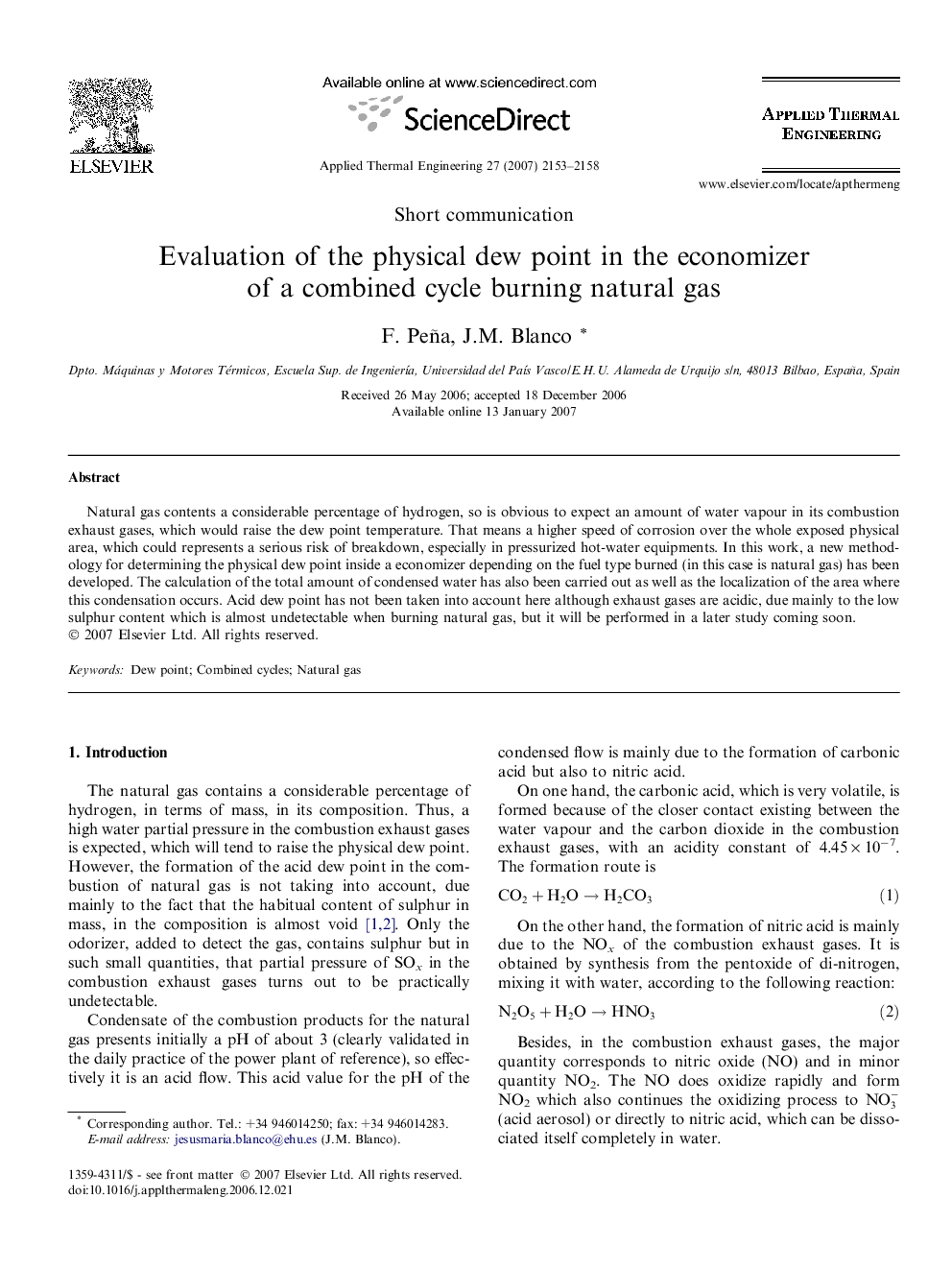| Article ID | Journal | Published Year | Pages | File Type |
|---|---|---|---|---|
| 649052 | Applied Thermal Engineering | 2007 | 6 Pages |
Natural gas contents a considerable percentage of hydrogen, so is obvious to expect an amount of water vapour in its combustion exhaust gases, which would raise the dew point temperature. That means a higher speed of corrosion over the whole exposed physical area, which could represents a serious risk of breakdown, especially in pressurized hot-water equipments. In this work, a new methodology for determining the physical dew point inside a economizer depending on the fuel type burned (in this case is natural gas) has been developed. The calculation of the total amount of condensed water has also been carried out as well as the localization of the area where this condensation occurs. Acid dew point has not been taken into account here although exhaust gases are acidic, due mainly to the low sulphur content which is almost undetectable when burning natural gas, but it will be performed in a later study coming soon.
